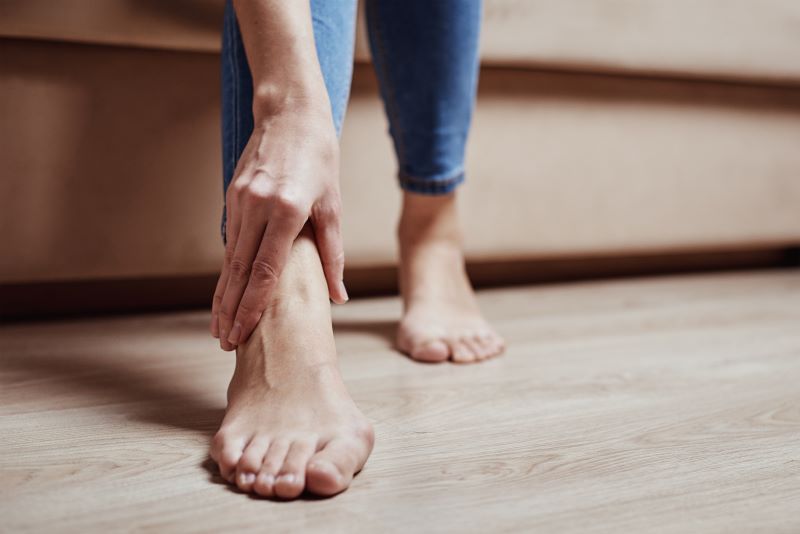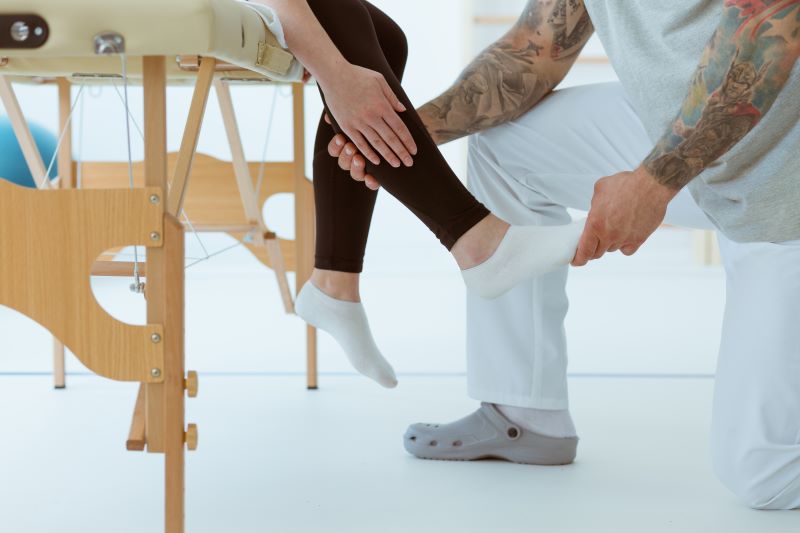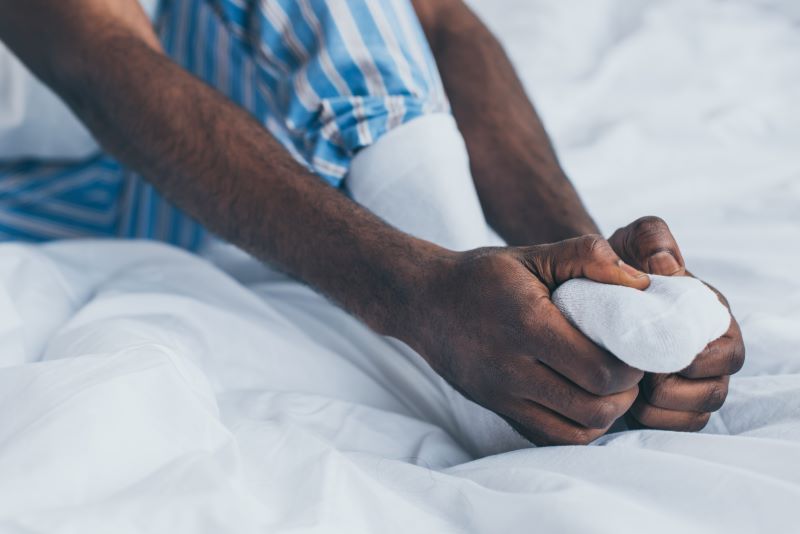What is Hallux Rigidus? Do you struggle to move your big toe? When you try do you feel stiffness or pain? This could be Hallux Rigidus. The pain and stiffness of Hallux Rigidus are not something to ignore. If left untreated, the condition can worsen to the point where walking, wearing shoes, and just standing becomes unbearable. If you can learn the answer to the question, “What is Hallux Rigidus?” you can identify the symptoms and start treating in before the pain becomes unbearable.
In this article, you will learn more about Hallux Rigidus, including the answer to the question. “What is hallux Rigidus?”, how it affects the big toe and causes joint pain. Although joint pain is a difficult thing to live with, there are treatment options available to mitigate the pain and get you back on your feet.
 Hallux Rigidus
Hallux Rigidus
So, what is Hallux Rigidus? Broken down, the word Hallux means big toe while the word rigidus means rigid or unable to bend. Simply put, Hallux Rigidus is a condition where the big toe’s range of motion is severely limited or completely frozen.
This rigidity is the result of degenerative arthritis. The cartilage between the joint located where the big toe meets the foot wears away leaving the joint without the cushioning it needs to move pain-free.
How Hallux Rigidus Develops and Progresses
This is a common condition. What is Hallus Rigidus and just how common is it? 1 in 40 patients over the age of 50 struggle with Hallux Rigidus. Although for most people there is no definitive reason the condition develops, it is likely that the stress of walking over a lifetime contributes to the development of Hallux Rigidus.
Overuse of the toe joint is the main cause of hallux Rigidus. Workers who often squat or athletes who overuse their feet are at an increased risk. Injuries such as stubbing your toe can also contribute to the development of Hallux Rigidus. Those with inflammatory diseases like rheumatoid arthritis or gout and those with osteoarthritis are also more likely to experience hallux Rigidus as a result of their other conditions.
Hallux Rigidus is a progressive condition. If left untreated it can not only become more painful but can also contribute to pain elsewhere in the body. Efforts to avoid the pain will cause the sufferer to walk in a way that mediates the pain. Unfortunately, in doing so, this misalignment of the hip, leg, foot, and toes could lead to pain in other parts of the body. Patients will often find that their knees hips and lower back begin to hurt as well.
 Hallux Rigidus Symptoms
Hallux Rigidus Symptoms
In addition to pain and a decrease in the toe joint’s range of motion, there are a few other symptoms of Hallux Rigidus you can look out for. The toe joint might become swollen or inflamed and you might develop a bump like a bunion or a callus on the top of your foot. Hallux Rigidus is likely to make wearing shoes very uncomfortable.
Big Toe
What is Hallux Ridgidus and why does it matter if my big toe hurts? You might be asking yourself this question. After all, the big toe is such a small part of your body. How much damage can neglecting Hallux Rigidus really do? Although stiffness in the big toe and pain might seem like a small matter, the motion of your big toe is central to balance and the ability to walk comfortably. Pain and a reduced range of motion will make walking increasingly more difficult and, as stated earlier, lead to the degradation of other joints as they pick up the big toes slack.
During your stride, the big toe pulls upward to keep the arch taut and absorb shock. When your range of motion is impeded by conditions like Hallux Rigidus, not only will the pain make it difficult to walk but the lack of stability caused by the decreased range of motion also makes walking difficult.
The joint affected by Hallux Rigidus, the metatarsophalangeal, carries 40% to 60% of your body weight during the stance phase of your gait. The stance phase of your gait occurs when your foot touches the ground through when that same foot leaves the ground. For that brief moment, you are standing on one foot with most of your weight supported by your one big toe. It is no wonder that big toe pain is so common.
Toe Joint Pain
Your toes are important. They deserve to be looked after just as much as your knees, hips, and back. Begin taking care of your feet and toes today and your pain may decrease. What is hallux Rigidus and how can you treat the toe joint pain that so many suffer from?
Shoes can make all the difference when treating foot pain from conditions like hallux Rigidus. To take pressure off the big toe, invest in shoes with a large box. A stiff or rocker sole can hold the foot in such a way that it does not need to bend in order to propel you forward. Orthotic inserts can support your toe and correct for abnormalities so you can walk with less pain.
As some of the joint stiffness can come from inflammation and cause pain, anti-inflammatory medication can help. For example, Ibuprofen is a common anti-inflammatory pain reliever that many people already have in their homes. Your doctor can point you in the right direction if you need help finding the right pain reliever.
If new shoes and anti-inflammatory pain medications do not help, your doctor might recommend cortisone shots. These can also help reduce inflammation and pain.
If these treatments are not effective, your doctor might recommend surgery. Depending on the severity of your Hallux Rigidus, the doctor will go in and remove the arthritic tissue and bone spurs. If the condition is severe, the doctor might fuse the joint or offer a joint replacement.
 Foot and Ankle Health
Foot and Ankle Health
If you need more information about how to answer the question, “What is Hallux Rigidus?” contact and make an appointment with the doctors at The Foot and Ankle Specialists of Illinois. A doctor will be able to confirm a diagnosis of Hallux Rigidus and inform you of your options. Only you and your doctor can get you the tools you need to fix your feet and get moving again.

